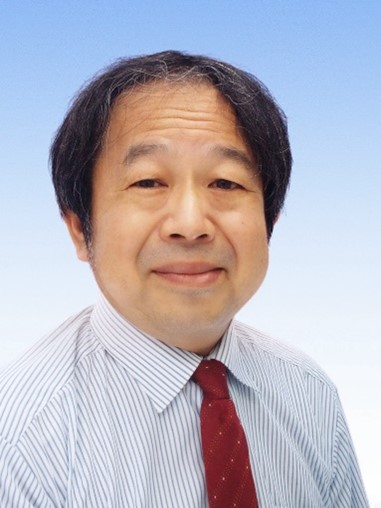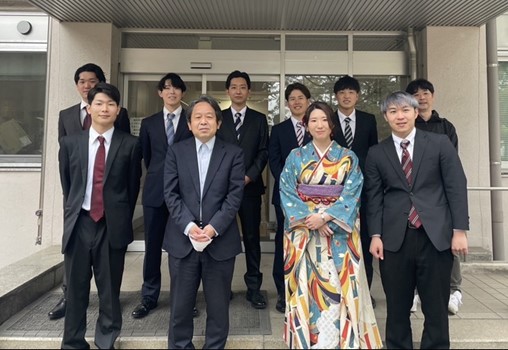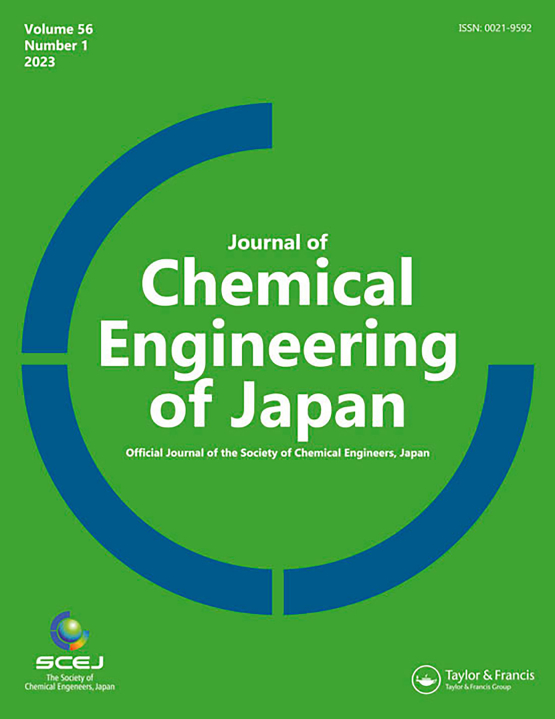Meet the Editor-in-Chief:
Professor Masato Yamamura
In this edition of our “Meet the Editor” series, we speak to Professor Masato Yamamura, Editor-in-Chief of the Journal of Chemical Engineering of Japan. Masato is currently a Professor of the Department of Engineering at Kyushu Institute of Technology, where his research is focused on coating and drying of thin films involving micro and nano-structures.
Masato serves on the scientific committee of the European Coating Symposium (ECS) and as a director of the International Society of Coating Science and Technology (ISCST). He is involved in numerous conferences and symposiums, most recently as chair of the 14th Japan-Korean Symposium on Materials and Interfaces. Masato also consults with more than 10 Japanese coating companies on thin film coating and drying technologies.
Can you introduce yourself, give us a brief description about who you are, and where you are based in the world.
I am a Professor at the School of Engineering, Kyushu Institute of Technology (Kyutech), Japan. I earned my BEng, MEng, and PhD degrees in Chemical Engineering from Kyoto University in 1991, 1993, and 1998, respectively. Since 1996, I have been a faculty member in the Department of Applied Chemistry at Kyutech. I was a visiting researcher at the Department of Chemical Engineering and Materials Science, the University of Minnesota, during the summer seasons of 1999 and 2000.
In a few sentences, please describe the focus of your work.
My current research focuses on the coating, drying, and microstructuring of liquid thin films of soft matters, including colloidal suspensions, polymer blends, photocurable fluids, and liquid crystals. I am particularly interested in solving practical problems in industrial coating processes based on scientific understandings and in developing new characterization tools for analysing drying-induced microstructural evolutions.
What sparked your interest in this field and why is it important?
Liquid thin-film coatings, one of the core technologies in advanced industries, have been widely used to produce organic transistors, solar cells, optical photo conductors, fuel cells, lithium-ion battery electrodes, magnetic tapes, optical films for displays, ink-jet papers, adhesive tapes, color-coated steels, medical tapes for drug delivery, packaging and labels, and cosmetics.
Despite this diversity, common scientific principles work for designing and optimizing the coating processes, motivating me to contribute to the development of fundamental science in liquid thin-film coatings. Coating science and technology have been developed in the chemical engineering community and are significantly related to fluid mechanics, rheology, soft matter physics, transport phenomena, and polymer science.


What lead you to become the Editor-in-Chief of the Journal of Chemical Engineering of Japan and could you briefly share what your day-to-day role as an editor entail?
The Journal of Chemical Engineering of Japan (JCEJ), established in 1968, is the official English-language journal of the Society of Chemical Engineers Japan (SCEJ). I have been familiar with the JCEJ since my PhD research days. Because Internet browsing was not popular at the time, it was my routine to visit the departmental library to look through the journal’s latest printed issues.
I was appointed an Editorial Board Member of JCEJ in 2017 and served as the Associate Editor-in-Chief from 2019 to 2022, which motivated me to strengthen my involvement in the chemical engineering community. Since the journal transitioned to a fully open access model in 2023, my day-to-day role involves working with Editorial Boards, SCEJ officers, and the Taylor & Francis team to handle the submissions through a rigorous yet efficient peer-review process, as well as actively promoting the JCEJ as an important global platform in the field of chemical engineering.
With the increasing emphasis on sustainability and environmental impact, how is the field of surface coating and drying evolving to meet these requirements? Are there any notable developments in eco-friendly coatings or energy efficient drying methods that you find promising?
I believe that chemical engineering directly contributes to the development of new processes to achieve sustainability with a low environmental impact. Coating technology is no exception. For instance, in terms of saving energy required for solvent removal, significant progress has been recorded in the precision coating of non-Newtonian fluids with lower amounts of solvents, “green” coating of water-born liquids, infrared drying, and simultaneous multi-layer coating technology that can eliminate the needs for multiple coating-drying operations.
You were recently awarded the John A. Tallmadge Award for your significant contributions to the understanding and improvement of the technology of coating. As a leading expert in this field, how do you envision the future of coating technology? Are there any specific areas or challenges that you believe require further attention or research?
Advanced thin liquid film coatings involve rich multiscale physics, which makes the optimal design and control of the process difficult. Furthermore, it is a significant challenge to improve the process to become more robust against variations in renewable energy supply, raw and/or reused material characteristics, and production rates based on commercial needs to satisfy the social requirements of sustainability as other chemical processes. The development of a model system that serves as an effective digital counterpart of an actual process, sometimes referred to as digital twins, provides new directions for resolving these problems with the help of advancement in machine learning in coating science.
Why should researchers submit to the Journal of Chemical Engineering of Japan?
The Journal of Chemical Engineering of Japan (JCEJ) publishes original research papers in the fields of chemical engineering, ranging from fundamental principles to practical applications. The JCEJ provides a global forum, and more than 50% of its submissions are from outside Japan. The recent acceptance rate was less than 60% in 2021-2022, demonstrating the rigorous peer-review process that authors have valued. The journal covers a wide range of subject areas, including physical properties and physical chemistry, transport phenomena and fluid engineering, particle engineering, separation engineering, thermal engineering, chemical reaction engineering, process systems engineering and safety, biochemical, food and medical engineering, micro and nano systems, materials engineering and interfacial phenomena, energy, and the environment. Among the journals published by national chemical engineering societies, JCEJ was the pioneer in transitioning to a fully open-access format. By doing so, we facilitate the sharing of high-quality research contributions with readers freely.
What advice would you give to early career researchers who are just starting out in this field?
Chemical engineering is a multidisciplinary, practical engineering science that often derives new concepts from industries. I was privileged to have met many accomplished coating engineers, who motivated me to challenge the new problems encountered in real world processes. My recommendation to early-career researchers is to embrace the joy of exchanging ideas and sharing breakthroughs, not only within academia but also among the global engineering community. Such interactions will certainly enrich one’s professional journey.
About the Journal
Journal of Chemical Engineering of Japan is a monthly English-language publication of the Society of Chemical Engineers, Japan. The Journal publishes original research in the fields of chemical engineering ranging from fundamental principles to practical applications.
